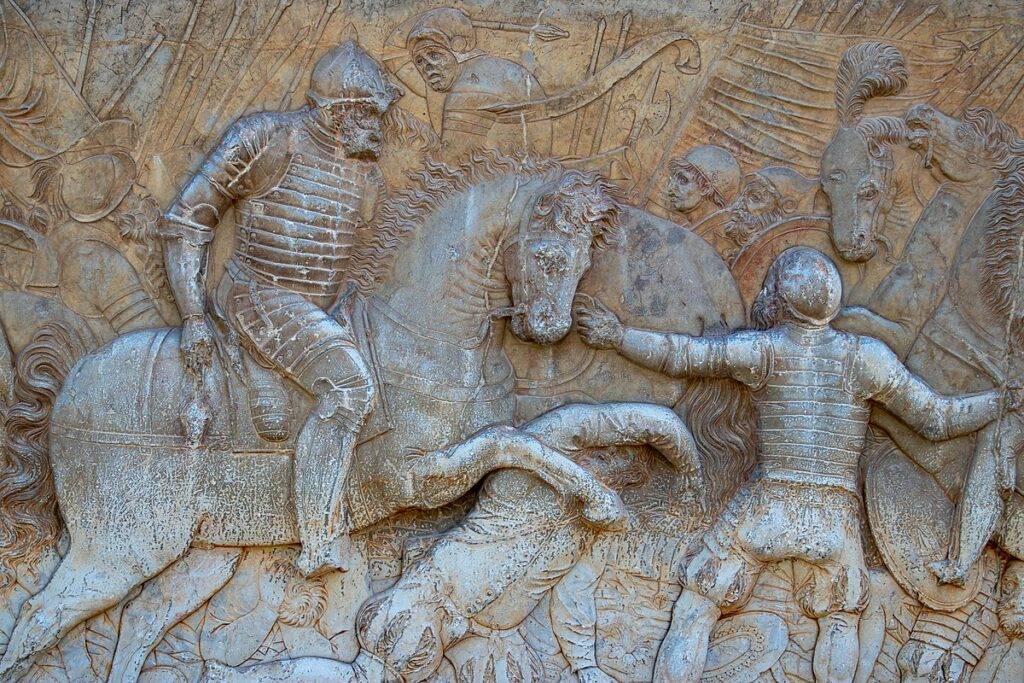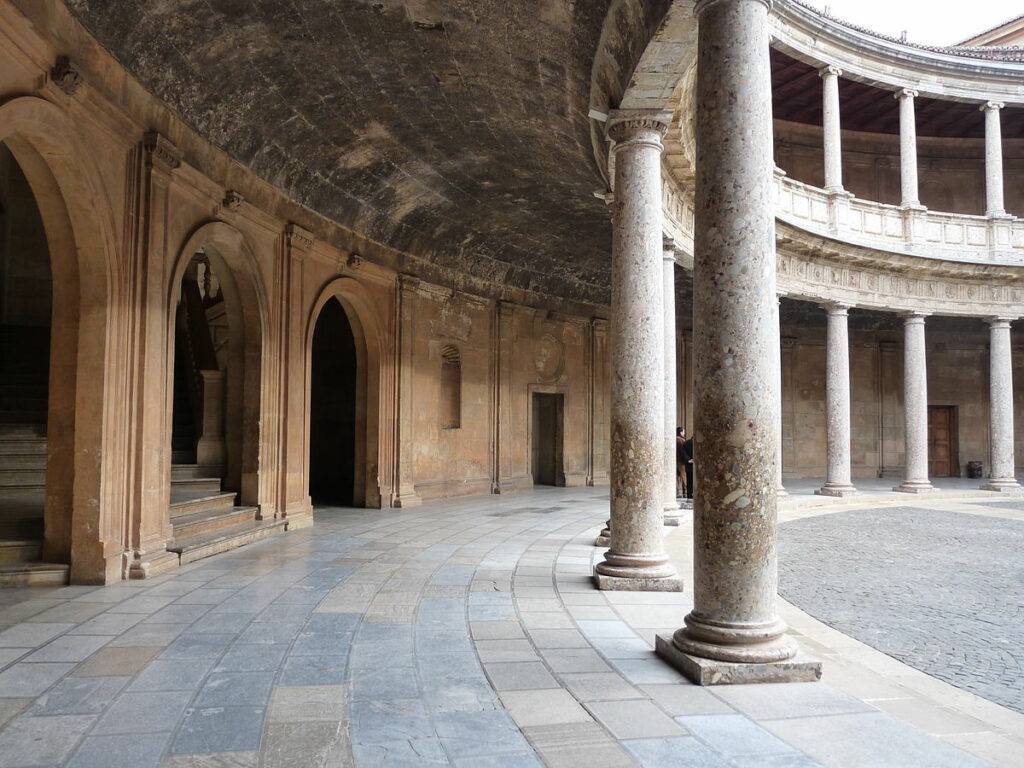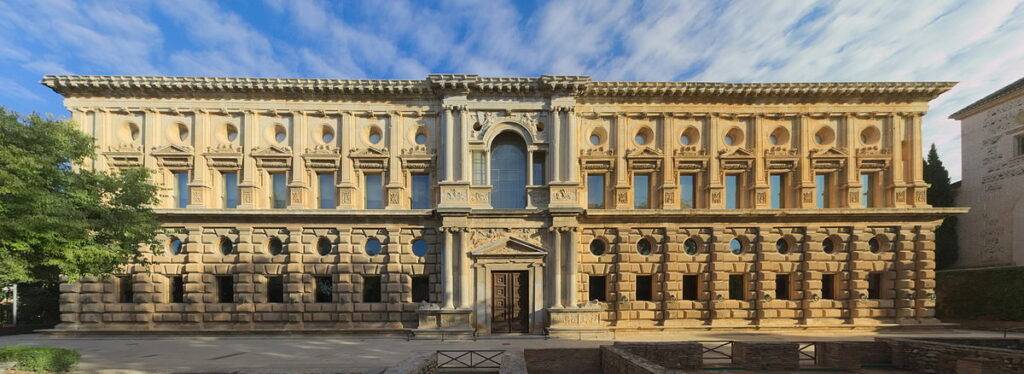CHARACTERISATION OF THE MATERIALS OF THE FAÇADES OF THE PALACE OF CHARLES V
The Palace of Charles V was built in the 14th century with the intention of becoming a stable residence for the emperor, who, impressed by having lived in the Alhambra for several months, commissioned this new palace to the architect Pedro Machuca. It was built at one end of the Patio de los Arrayanes, demolishing a pavilion opposite the Comares Tower, in the Mannerist style. Although it was built as a palace, it also served as an artillery store for the French army during the War of Independence and now houses the Alhambra Museum.
For this project, a series of samples of mortar and stone material, both original and replacement, from the west and south façades of the Palace were analysed. Compositional, morphological and textural analyses were carried out using diffraction (XRD) and X-ray fluorescence (XRF), polarised optical microscopy (POM) and scanning electron microscopy (SEM), as well as determination of porosimetry using mercury injection (MIP).



